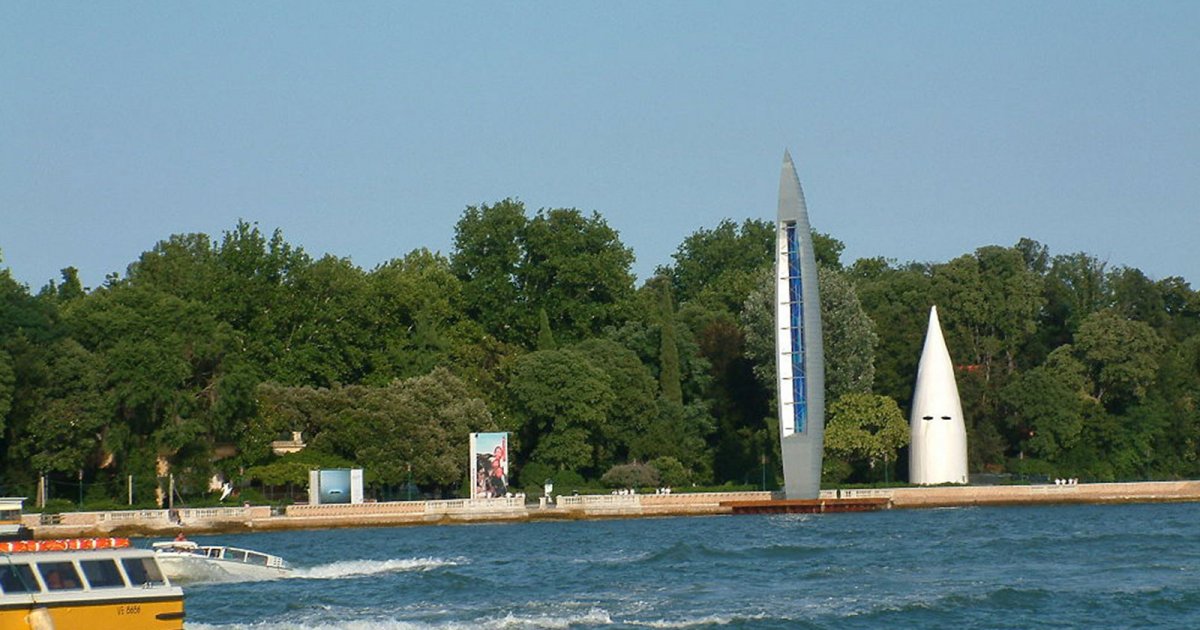BIENNALE, Gardens
 Language: English / USA
Language: English / USA
The Public Gardens were established at the beginning of the 1800s at the unsurprising behest of Napoleon, who created the largest green area in Venice by demolishing two churches and burying a canal. With the creation of the Biennale, however, the Public Gardens have also become a real outdoor museum of architecture, made up of 29 pavilions of participating countries, with styles ranging from Art Nouveau to modernism, and from rationalism to the postmodern. Even the perimeter fence made by Carlo Scarpa in 1952 is a significant architectural work!
After going past the entrance, the central axis of the garden is marked by a tree-lined path that leads to the central pavilion at the end, which is called Palazzo delle Esposizioni, or Exposition Palace. On your right is the Book Pavilion which was created in 1991 thanks to a private initiative. Further on you'll see two masterpieces of structural rationality and clarity: these are the Holland Pavilion of 1954 and the Finland Pavilion designed by Alvar Aalto in 1956.
The large central pavilion (formerly the Italian Pavilion) was built in 1894, but has been repeatedly extended and modified, finally reaching an area of 3500 square meters. It is the main and collective seat of the exhibitions.
Now pause the audio guide and go to the England Pavilion.
The England Pavilion of 1909 is one of the oldest ones and is near those of France and Germany, which are respectively from 1912 and 1937. The Canada Pavilion was instead built in 1957 by a team of Italian architects. Don't miss the Russia Pavilion from 1914, which is also interesting because it is one of the last creations from the era of czars. I'd also like to point out the Venezuela Pavilion designed by the Italian Carlo Scarpa, and the Switzerland Pavilion designed by Bruno Giacometti, whose brother Alberto is one of the greatest painters and sculptors of the 1900s. In addition to visiting the Rio dei Giardini, I suggest strolling past the Austria Pavilion designed by the great Joseph Hoffmann.
FUN FACT: even though the Bienniale got its name from the fact that it's held every two years, the Venice Film Festival, which is an integral part of the Biennale, takes place every year. It is the oldest film festival in the world, and was founded in 1932.
And with this we have finished our tour of Venice's Biennale. MyWoWo thanks you for staying with us, and will see you at the next Wonder of the World!



